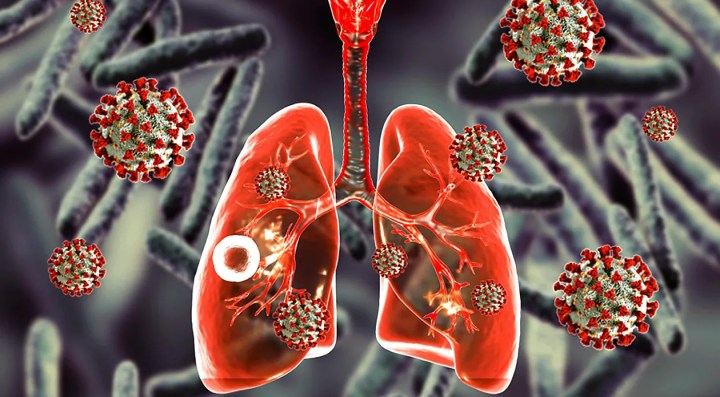TAKING CARE
Fight against TB is gaining ground in SA, but there’s a long way to go, say scientists

At a webinar hosted by the TB Accountability Consortium on Thursday, scientists explained how the fight against tuberculosis is proceeding. However, despite South Africa’s progress in reducing TB incidence and improving rates of detection and linking patients to treatment, the disease remains a leading cause of death in the country.
Despite tuberculosis (TB) being a treatable disease, 54,200 people died from TB in South Africa in 2022, according to data from the World Health Organisation (WHO).
On Thursday, 25 April 2024, the TB Accountability Consortium hosted a webinar in which scientists explained how they were trying to gain ground in the fight against tuberculosis.
The webinar discussed the burden TB places on South Africa, patients facing catastrophic costs of TB treatment, finding missing TB patients too late, as well as some of the progress made in tackling TB.
Speakers included Sizulu Moyo from the Human Sciences Research Council, Neil Martinson from the Perinatal HIV Research Unit, Ronelle Burger from Stellenbosch University and Joseph Daniels from Arizona State University.
The burden of TB in South Africa

Despite tuberculosis being a treatable disease, 54,200 people died from TB in South Africa in 2022, according to the World Health Organisation. (Photo: Esa Alexander / The Times / Gallo Images)
One person dies of TB every two seconds globally, and South Africa had more than 304,000 new TB cases and 56,000 TB deaths in 2021, according to Dr Samantha Maughan, a researcher at the Rural Health Advocacy Project.
Providing highlights from the TB Accountability Consortium’s 2024 State of TB in South Africa report, Maughan noted that men were 1.7 times more likely to die from TB than women.
While HIV and TB had a significant interaction, smoking, poor nutrition and alcohol abuse were among other factors that could contribute to TB.
“It is thought that the discrepancy between TB deaths in men and women is due in part to factors such as men’s lower participation in HIV-related services, lower TB testing rates, poorer adherence to TB treatment and higher rates of loss to follow-up than women,” Maughan said.
The “care cascade” evaluated patient outcomes for a disease across stages of care, Maughan explained. Steps in the TB care cascade included finding TB patients, linking them to care and providing them with treatment.
Maughan said screening protocols were not always followed. Healthcare workers indicated TB screening could be overwhelming and that patients’ attitudes and behaviour also influenced whether they were screened.
The type of screening tool used also has an impact on the success of TB screening. Symptom screening is ineffective for identifying asymptotic TB, and South Africa’s first TB prevalence survey showed that 57.7% of TB cases were asymptomatic and would, therefore, not be picked up with symptom screening.
Read more in Daily Maverick: Yes we can eliminate tuberculosis, but it will need a mass screening campaign
The high proportion of people with asymptomatic TB is one of the main reasons for introducing Targeted Universal Testing for TB (TUTT).
According to guidelines, TUTT should be offered at hospitals, primary care facilities and at the community level, and it should focus on testing the following high-risk groups, regardless of TB symptoms: HIV-positive patients, those treated for TB within the past two years and those who have been in close contact with a TB patient in the past year.
“We have a lot of people who are HIV positive who have got TB, and obviously, we also contribute and feature significantly globally, as far as drug-resistant TB is concerned,” Moyo said.
Moyo said South Africa was making some progress in the fight against TB.
“We see that the incidence is gradually going down. South Africa met its targets in 2020 in terms of reduction of incidents, but that does not mean that we’re there yet. We still have a lot of cases, but there is some progress, and we are trending towards the right direction,” she said.
Read more in Daily Maverick: Despite advances, tuberculosis remains an acute disease in need of chronic attention
Patients facing catastrophic costs are important to keep in mind, Moyo said.
According to the WHO, catastrophic costs are defined as total TB-related costs (direct medical, direct non-medical and indirect) exceeding 20% of the TB-affected household’s annual income.
“We find that this is at 56% in South Africa, which is very high. So it has a bearing in terms of when we think about what we need to do in addressing the gaps and how we look through the interventions that we apply at different sections of the TB care cascade, so that 56% is something that we need to keep in mind,” she said.
Patients dying at home
Martinson reflected on what happened when TB patients were found too late.
“Tragically, finding them too late really implies that they have succumbed or have been admitted to hospital for critical illness related to their TB,” he said.
Read more in Daily Maverick: Does South Africa’s biggest killer show up in your party’s manifesto?
Martinson shared an autopsy study from 2012 about people with TB dying at home. In South Africa, about 30% of all people will die at home.
“We thought that if the TB control programme is not working, it’s likely that a substantial proportion of people who die at home will have what is known as garbage term as the cause of death. So these are terms that are nonspecific and really don’t contribute to being able to count the cause of death so that you can intervene,” he said.
Some examples of nonspecific causes of death include chronic cough, natural and cardiorespiratory arrest.
“Over the years, the numbers of TB are clearly reducing in South Africa, and this is likely to do with antiretrovirals, more accessible TB diagnosis. RDP housing has created millions of houses for people to live in which were an improvement on what they were living in previously and there’s been an incredible expansion of the social grants,” Martinson said.
“And all of these are likely to contribute to reducing tuberculosis, and particularly reducing the tragic consequences of tuberculosis, which is deaths, and one of the measures of deaths are these people who die at home without an apparent cause.”
The autopsy study of 2012 found that 31% of people who died at home had some evidence of TB. When the study was repeated in 2019 and 2020 (at the same site in Matlosana, North West), 16% and 17% of people had some evidence of TB.
“So if you just compare the 31%, it has approximately halved eight to nine years later, and we think that’s probably a reflection of the improved TB programme, improved social conditions and markedly improved diagnostic of TB,” Martinson said.
He also shared a study that looked at deaths at Tshepong Hospital from 2017 to the first quarter of 2020, which indicated that TB remained either the first or second rank in the strata of viral suppression.
“So even in people who, by the South African definition, would be considered virally suppressed, TB is the second leading cause of death, and that’s really quite worrying,” he said.
Martinson said implementing TUTT had had a discernible impact in South Africa, although it was very variable from province to province.
“We really don’t know what the impact on transmission, treatment outcome or mortality will be, and there’s more work to be done,” he said. DM




















Comments - Please login in order to comment.